
Blaze Carved in Darkness Woodcut Movements in Asia 1930s-2010s
2019.02.02 - 2019.03.24
Date : 2019.02.02(Sat) – 2019.03.24(Sun), Closed on Wednesdays
Venue : Arts Maebashi Gallery
Open hours : 11:00-19:00 (Last Admission 18:30)
Tickets:Adult ¥500(300), University students and over 65 years old ¥300.
Fares in brackets are rates for group of 10 or more.
Free entrance for high school students and Under.
Free entrance on 8 March for “International Day for the Elimination of Racial Discrimination”.
Entrance between 5pm to 6:30pm ¥300
Bring a stub “A TAXI DRIVER”,”1987: When the Day Comes” at Maebashi Cinema House¥300
Organizers : Arts Maebashi, The Yomiuri Shimbun, The Japan Association of Art Museums
Co-organizer : Fukuoka Asian Art Museum
Sponsors : Lion Corporation / Dai Nippon Printing Co.,Ltd. / Sompo Japan Nipponkoa Insurance Inc. / Nippon Television Network Corporation
ABOUT THE EXHIBITION
This exhibition contains about 400 works and is the first large-scale exhibition on Asia’s woodcut movements in the world. The exhibition seeks to articulate how woodcut was developed in Asia and how this small yet important media played a role in the social and historical context of the region.
Carve, Print, and Post!—Pioneer of SNS
You can create woodcuts (woodblock prints) with handy and cheap materials, and print as many copies as you like, so that you can convey your feeling and report what happens around you. The audience will grow by posting prints, hanging posters, and reproducing the images in publications. Thus the woodcut is a ‘democratic’ media both for creator and audience, which far exceeds the common presentation of artwork—the woodcut is a pioneer of today’s SNS.
Big History Written in Tiny Prints
Woodcut as a ‘democratic’ media was often created and disseminated in political and social movements in Asian cities, such as those for independence from colonial rule, democratization against the dictatorship, reformation of labor situation, and the protest against environmental pollution. The woodcut has contributed in such activisms by conveying the hardship of people, disclosing problems of societies, seeking the solidarity with other communities, and mobilizing actions for better societies.
Light of Humanity Cuts into the Dark World
Carving on wooden board produces white light on black background in printing. The woodcut as such has been an appropriate media for people who seek freedom and independence from the sheer darkness of societies. The history of woodcut in Asian cities does not only represent agony, struggle, or propaganda—it is a history of liberation in the subjective expression of oppressed people.
Solidarity beyond Exchange: Inter-Asian Network
The cultural and ethnic diversities in Asian traditional societies, as well as ideological gaps after the 20th Century, caused uncountable divisions and confrontations both domestically and internationally, which led to omnipresent tragedies. The woodcut has contributed in connecting people who lived in different communities but shared the problems far earlier than the globalization, not merely as cultural exchanges but also as a network of sympathy.
EXHIBITION STRUCTURE
1. 1930s- Shanghai: China’s encountering with European woodcuts
Lu Xun introduced modern woodcuts by Käthe Kollwitz and other European artists in Shanghai, which formed a basis for emerging woodcut movement.
2. 1930s China and Japan: Growth of woodcut movements seeking popularization of art
Promoted by Lu Xun, modern woodcut developed among young Chinese artists in Shanghai, and the movements spread to other cities. In Japan, the proletarian art movement explored the popularization of art.
3. 1940s–50s Japan: Exploration of democratic art and a boom of Chinese woodcuts
Postwar expectation for democracy revitalized woodcut movements in North Kanto region (northern outskirt of Tokyo). More than 200 exhibitions of Chinese woodcuts were held in Japan. Workers and regional communities engaged in woodcuts in circle activities.
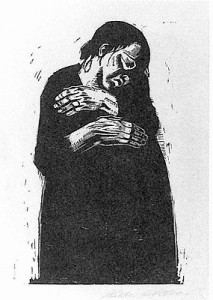
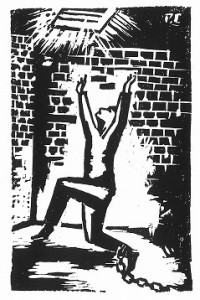
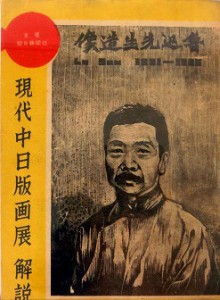
Left:Käthe Kollwitz The Widow Ⅰ (Sheet 4 of “War”), 1922-23, Collection: Fukuoka Art Museum
Center:Chen Baozhen Light Overhead, c.1932, Collection: The Museum of Modern Art, Kamakura & Hayama
Right:Brochure cover of Contemporary Chinese and Japanese Print, 1947, Collection: Society for Preservation of Iino Nobuya’s Art
4. 1940s–50s Bengal: Return our land
Woodcuts depicting anti-imperialism movements and peasant movements were created in Bengal (today’s West Bengal [India] and Bangladesh).
5. 1950s–60s Indonesia: International exchange of woodcuts in newspaper
An Indonesian newspaper introduced woodcuts from Asian cities as a part of national policy to enhance Third World solidarity during the Cold War period.
6. Singapore in the 1950s–60s: Shifting identity to the local, and woodcut as cartoon
Chinese artists in Singapore with a strong sense of attachment to the mainland started to find new identities in local life in a Nanyang (tropical) city.
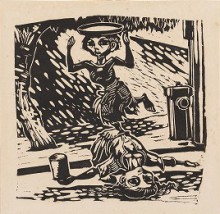
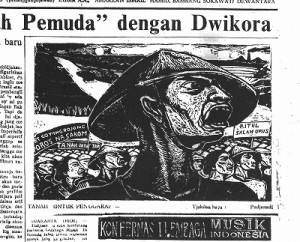
Left:Chittaprosad Famine, 1952, Collection: Fukuoka Asian Art Museum
Right:Suhardjija Pudjanadi Land for Peasant, from Harian Rakyat, 25 October 1964 (exhibited in reproduction)
7. 1960s–70s Era of Vietnam War: Joint-struggle beyond national borders
Vietnamese folk prints depicted war subjects; a Chinese print was copied in Pakistan and the United States, as an icon of the anti-imperialism and woman’s liberation struggles.
8. 1970s–80s The Philippines: Art of protest against the dictatorship
Kaisahan (Unity) and other artists’ groups formed in the late 70s supported the struggles of laborers and farmers against President Marcos’ dictatorship.
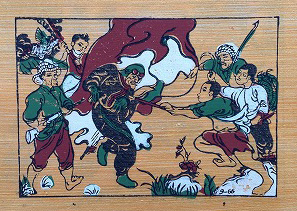
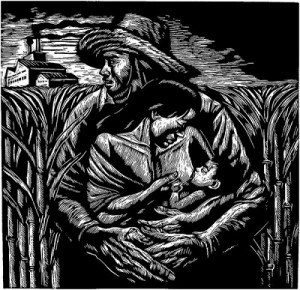
Left:Dong Ho print The Day of Unification, 1972 Private Collection
Right:Leonilo Ortega Doloricon [Philippines] Inside the Hacienda(detail),2014 Collection: Fukuoka Asian Art Museum
9. 1980s–2000s Korea: Woodcuts as icons of the democratization movement
The Gwangju Democratization Movement in May 1980 triggered nationwide protest against the dictatorship. In this movement, Minjung Misul (People’s Art) developed, giving woodcuts crucial roles in an enlarged picture for rallies and demonstrations, publication, outreach program, etc.
10. 2000s– Indonesia and Malaysia: DIY spirit for freedom
Collectives formed around the collapse of the Suharto regime in 1998 accused politician’s corruption and environmental crisis and supported farmers’ and fishermen’s struggles. With their DIY spirit, woodcuts as media revitalized, influencing artists in other parts of Asia.
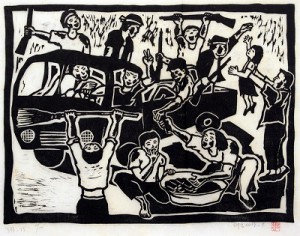
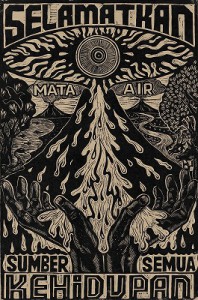
Left:Hong Sungdam May-25: The World of Unity-1, 1984, Collection: Fukuoka Asian Art Museum
Right:Taring Padi Save the Spring, 2009, Collection: Fukuoka Asian Art Museum
― ― ― ― ― ― ― ― ― ― ― ― ― ― ― ― ― ― ― ― ― ― ― ― ―
Art as social interaction in Asia
Within the thought of seeking the change of society, the woodcut print movement constantly found its way into people’s lives and, as it brought the everyday person in, it was spread out. Even in recent years, a movement that can be called “Socially Engaged Art,” a movement which works to tackle social problems while working with people and the pressures on society and politics, can be seen regardless of country or region. This is not a one -side engagement, but rather it is distinctive reciprocal in which Social Interaction has come into existence.
ARTIST
Irwan Ahmett & Tita Salina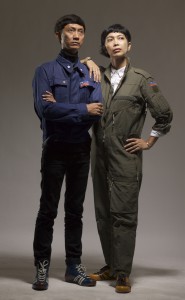
Irwan Ahmett and Tita Salina work and live in Jakarta, Indonesia. Studied Graphic Design at Jakarta Institute of Art (IKJ) and founded Ahmett Salina studio design and established for 16 years. Since 2010, they have produced self-initiative art projects focus on urban issue especially public space and make social and political issues as creative resources. In the last five years, Irwan and Tita have created some art works, participated in collective art projects and invited to residency programs in Indonesia, Japan, The Netherlands, New Zealand, Norway, Germany and participated in Singapore Biennale, Setouchi Triennale, Asian Art Biennale, Jogja Biennale, Jakarta Biennale.
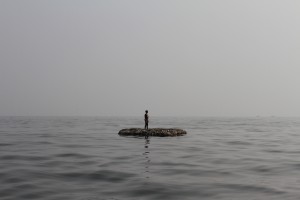
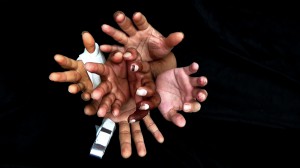
Left:Tita Salina, 1001st Island – The Most Sustainable Island in Archipelago, 2015, Indonesia, Video, duration 14 mins 11 secs
Right:The Flower Currency – 통화 (Tong Hwa),2017, South Korea, Video, duration 6 mins 48 secs
–Notice–
We have discussed how we can solve the problem, but unfortunately Okin Collective was not able to participate the exhibition due to disagreement among the member.
